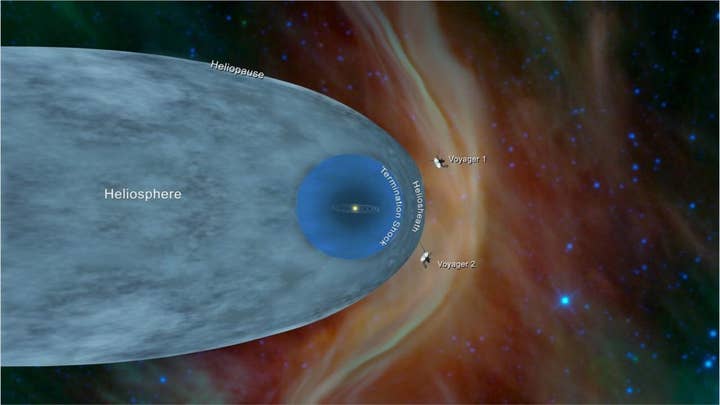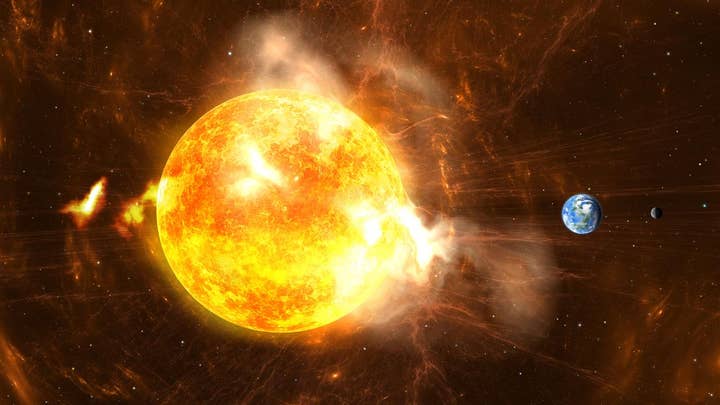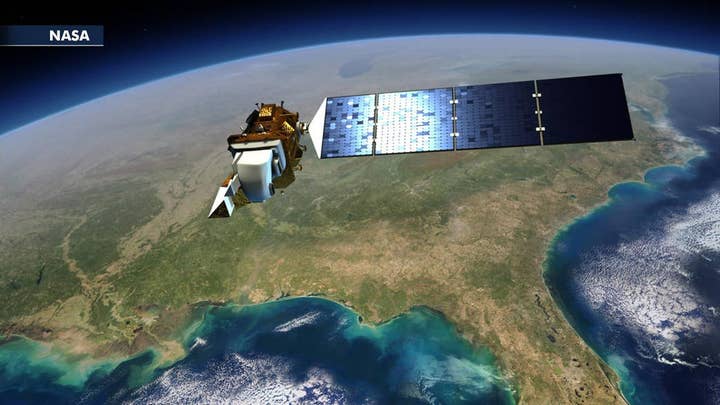That’s one small signature for President Trump, one giant leap for the “space force.”
President Trump on Tuesday signed a memorandum that officially established the United States’ interstellar armed forces. The news was announced by Vice President Mike Pence during a speech Tuesday morning at the SpaceX Rocket Launch event in Cape Canaveral, Florida.
“Under his leadership the United States is taking steps to ensure that American national security is as dominant in space as it is here on Earth,” Pence said. “It is my privilege to announce that today, President Trump will direct the Department of Defense to establish a combatant command that will oversee all our military activities in space.”
Pence added: “The U.S. Space Command will integrate space capabilities across all branches of the military. It will develop the space doctrine tactics, techniques and procedures that will enable our war fighters to defend our nation in this new era.”
Officially called the United States Space Command, the new command will fall short of becoming a new branch of the armed services – or “space force” as Trump has said previously - but Pence noted in his remarks on Tuesday that Trump is expected to soon sign a policy directive laying out plans and a timeline to make the “space force” the sixth branch of the military.
“We're working as we speak with leaders in both parties in Congress to stand up the United States Space Force before the end of 2020,” Pence said.
Besides establishing the “space force,” Trump’s memo also directs Secretary of Defense James Mattis to select commanding officers for the president’s nomination and for Senate approval.
The U.S. Air Force has operated U.S. Space Command since 1982 at Peterson Air Force Base in Colorado.
The new command raises its profile, putting it on par with the current combatant commands such as U.S. Central Command (CENTCOM), responsible for U.S. forces in the Middle East and Afghanistan, U.S. Special Operations Command (SOCOM) and U.S. Cyber Command.
The U.S. Space Command existed in this same capacity from 1982 to 2002. After the 9/11 attacks, it was moved under U.S. Strategic Command, responsible for all of the U.S. military’s nuclear weapons.
Experts told Military.com shortly after Trump first floated the idea over this summer that the space force would need somewhere between 15,000 and 20,000 active personnel – augmented by a small army of civilian contractors – and that a service academy like the U.S. Military Academy at West Point or the Air Force Academy in Colorado would need to be established to train its future leaders.
"The most compelling justification for an independent service for space is on the personnel side," said Todd Harrison, director of the Aerospace Security Project at the Center for Strategic and International Studies. "A grooming of a space cadre of space professionals ... that's where the Air Force has not offered much in the way of reform.”
But maybe the biggest question is: What would the “space force” actually do?
While some online commentators envision something akin to Star Trek or Battlestar Galactica, the reality would – at least in the foreseeable future – be more down to earth.
Inside the Pentagon, there is a small but vocal minority pushing programs such as anti-satellite weapons, missile detection capability and space-based solar power to counter mounting space threats from Russia and China. But others argue that the biggest danger to future space exploration is the debris floating around Earth’s orbit now.
Whatever the mission, experts tend to agree that a “space force” won’t be something that will be patrolling the final frontier anytime during Trump’s current presidential term.
“This is something that is going to take a long time to get running, three to five years if things run smoothly and this actually gets through Congress,” John Crassidis, a professor of mechanical and aerospace engineering at the University of Buffalo, told Fox News.
Fox News’ Lucas Tomlison contributed to this report.







